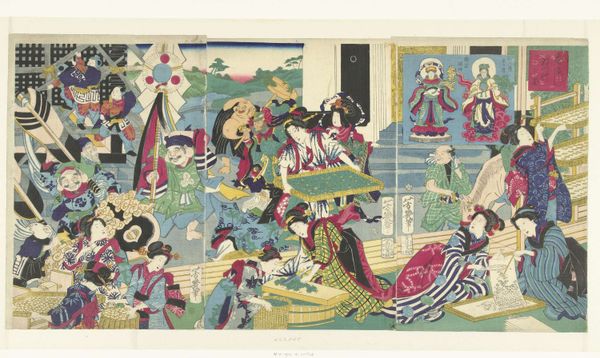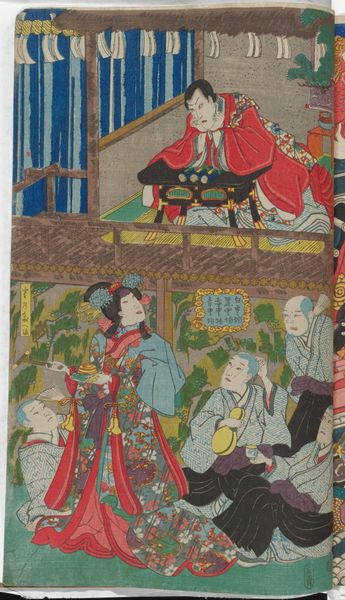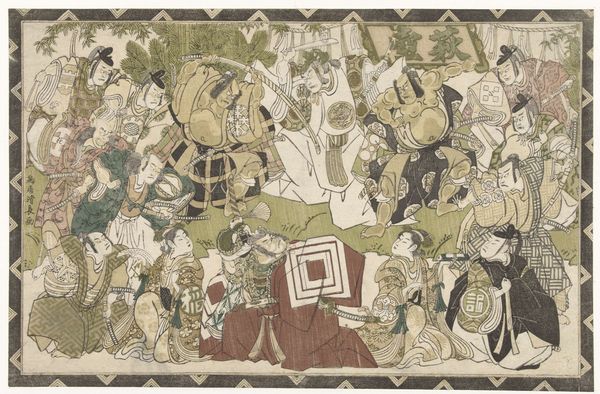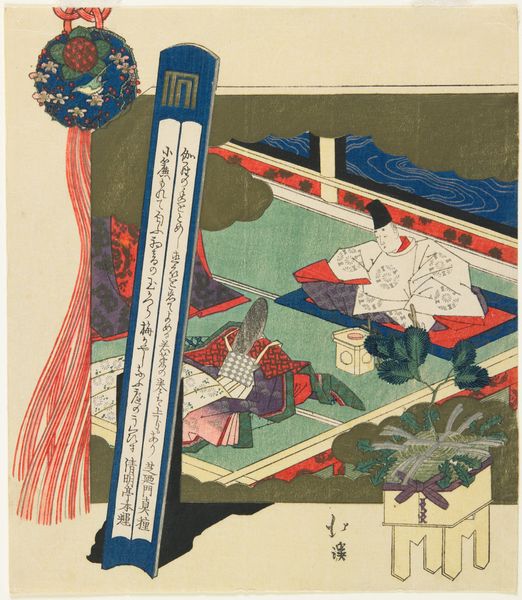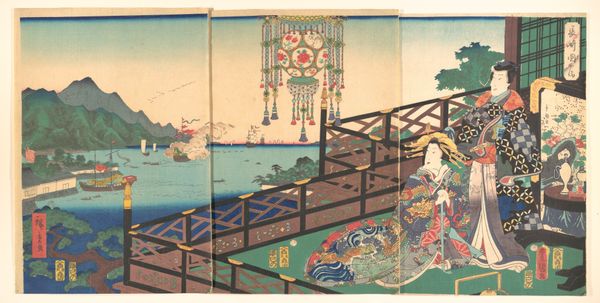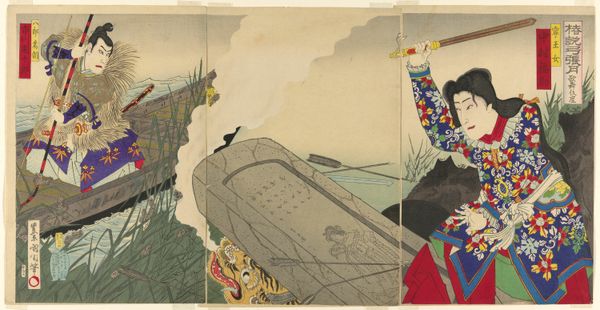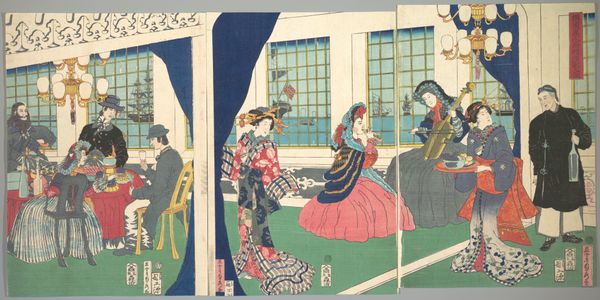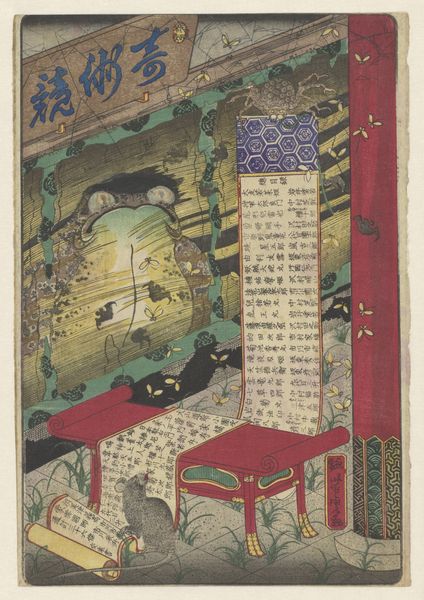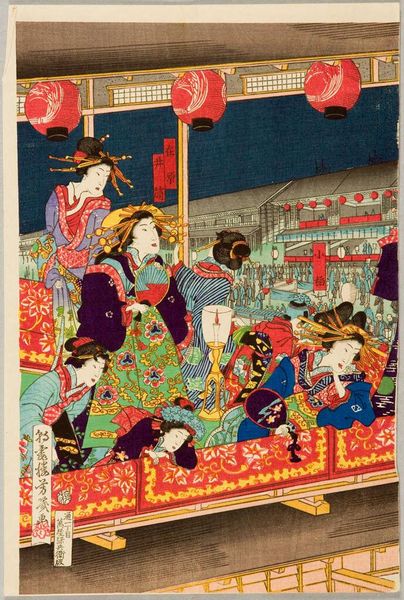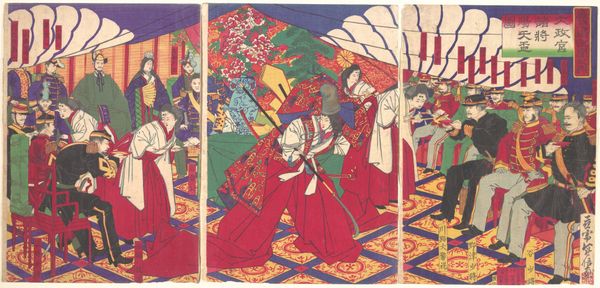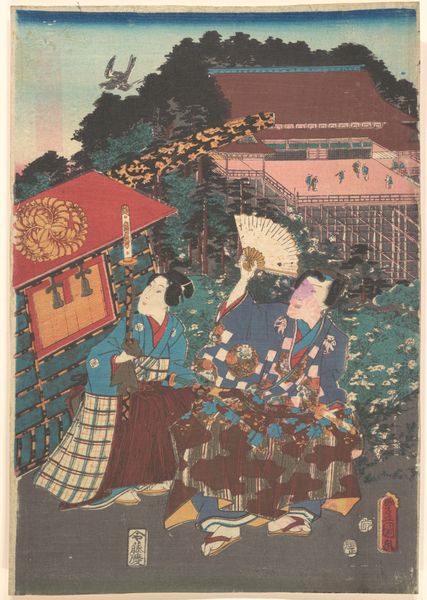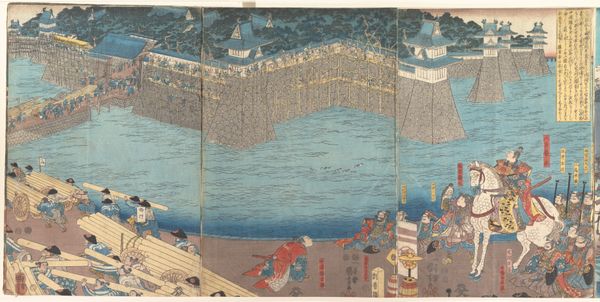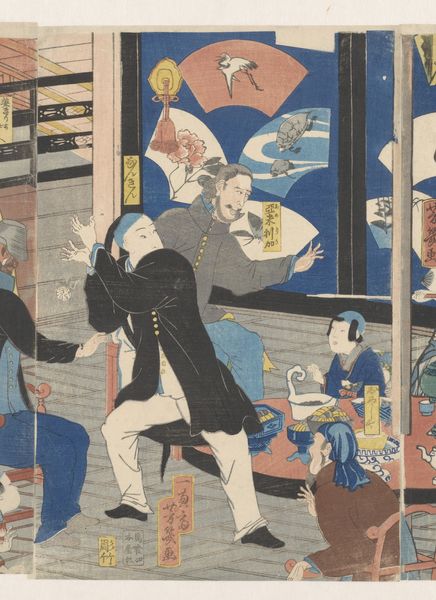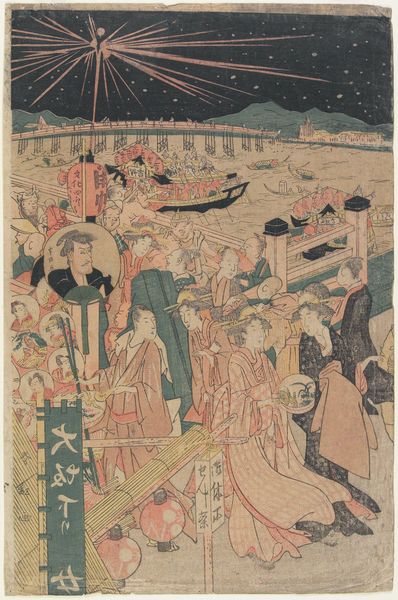
Dimensions: height 357 mm, width 245 mm
Copyright: Rijks Museum: Open Domain
Curator: Looking at this print, I'm immediately struck by the sheer abundance of goods. It almost feels claustrophobic, this density of objects displayed before us. Editor: It does have a certain 'more is more' quality. We're viewing "A Flourishing English Trading House in Yokohama," a print created between 1871 and 1878 by Utagawa Yoshiiku. It’s currently held in the Rijksmuseum collection. What’s interesting is its context. This work exists within the Japonisme movement. Curator: Precisely. Japonisme reflects the Western fascination with Japanese art and culture following the opening of Japan to foreign trade in the mid-19th century. Prints like this catered to that fascination, showcasing aspects of Western life that would seem exotic or novel to a Japanese audience. This isn't a documentary photograph; it's a curated performance for a specific market. Editor: I think it also reveals a complex power dynamic at play. The print aestheticizes the trading house and makes it seem like some ornate doll house or bizarre display. However, that beauty can obscure the realities of trade relationships. Western presence impacted local economies and traditions and caused various social inequalities in the East at that time. Curator: That's an astute observation. We see here a snapshot in time, a collision of cultures mediated by commerce. The artist chooses to represent the building as it flourishes, yet there's no commentary or assessment on the cost of flourishing. I appreciate that the people depicted are of mixed race or cultural expression and it raises all manner of interesting social commentary. Editor: Exactly, and if we look at those figures, the composition directs our focus to the consumer. Their bodies become a part of the material, where there is no obvious story. To me, it asks us to question whose gaze is prioritized and whose story isn't being told here. Curator: I'd never looked at this piece like that before. It’s interesting how, with closer inspection, seemingly innocuous historical art can reveal uncomfortable truths about historical trade imbalances. Editor: Well, that's the power of understanding context, isn't it? Curator: Indeed. It shifts the understanding from a snapshot to a wider panorama of cultural and political exchange.
Comments
No comments
Be the first to comment and join the conversation on the ultimate creative platform.
